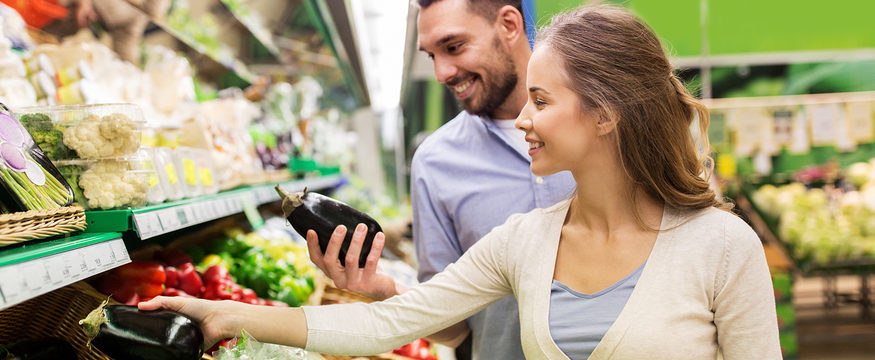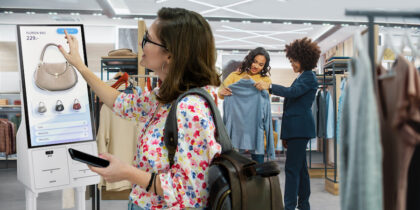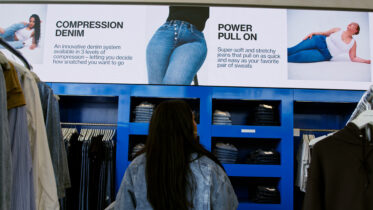A localization business strategy and an improved retail customer experience will be key for grocers to survive the disruption coming to the grocery industry. Amazon’s upcoming acquisition of Whole Foods is expected to bring big changes to the space, and grocers will have to compete not only with scale, but with new technologies.
Much as Amazon used volume, e-commerce and rapid fulfillment to revolutionize the retail industry, the company is expected to bring new and innovative technologies to the grocery sector. This could include everything from IoT devices in stores to monitor inventory levels, to robust mobile apps and payment solutions where consumers can perform their own in-store checkout.
Amazon’s entry into the grocery space is expected to only increase competition and force others to adapt new technologies. Michael Wystrach, co-founder and CEO of meal delivery service Freshly, told Fortune that while food has been insulated from the e-commerce revolution over the past decade, “the evolution of the grocery store business is going to evolve dramatically over the next five years.”
The stakes are big, as the Food Marketing Institute reports that grocery stores generate almost $770 billion in retail sales annually. One model with tremendous potential is Amazon Go which uses sensors, artificial intelligence and machine learning to bypass a traditional checkout process. It automatically tracks items a customer picks up then adds it to a virtual cart in their mobile phone app. When the customer leaves, the app automatically charges everything to their Amazon account. While the company hasn’t announced its intention to do so, analysts already believe Amazon will eventually use its “Just Check Out” system in Whole Foods stores.
Much as it has done with its e-commerce operations, Amazon is also expected to bring greater use of data to its brick-and-mortar groceries. This could include apps that learn customer preferences and can make personalized product recommendations as they move through the store.
Consumers Want Speed and Convenience
Because consumers shop for groceries so regularly and spend so much money, reducing friction could have a significant impact on the bottom line. The U.S. Department of Agriculture reports that a family of four with a “moderate cost” meal plan spends more than $1,000 per month on food, and the National Grocers Association says nearly 90 percent of consumers have a “primary grocery store.” And while consumers select their primary stores largely on overall satisfaction and convenience, nearly 49 percent of respondents said fast checkout was “very important.”
IoT Tools Are Reshaping the Shopping Experience
Discover how you can create the retail experience of the future in this white paper. Download Now
Kroger and Walmart are currently experimenting with “click and collect” concepts where consumers can order their groceries ahead of time then pick them up at the store. Kroger CIO Chris Hjelm told Wall Street Journal the company is also testing interactive shelves with sensors to detect shoppers in the aisles via their smartphones and offer personal pricing and suggestions. For example, if a customer is gluten-free, the app may highlight products as they walk through the store. The company is also using digital cameras and analytics to better optimize customer service in the store, and its “Scan, Bag, Go” self-checkout technology is now in 15 stores.
A Localization Business Strategy and Superior Customer Service Are Key
Despite its scale and technologies, Amazon’s challenges in the grocery space could be a benefit for grocers that can use a localization business strategy to offer a better retail customer experience.
While the Amazon Fresh grocery delivery concept has opened in limited markets, long-distance delivery of groceries can be challenging because many products have temperature requirements. An analysis of operations at Amazon Fresh in 2014 found the company wasted much more than double the rate of produce for a typical supermarket. Amazon has also struggled to entice consumers to buy cold products such as eggs and berries in the same way they have bought books and general merchandise.
Kurt Jetta, CEO of consumer products research firm TABS Analytics, told Bloomberg that there is little demand in grocery delivery. “The whole premise is that you’re saving people a trip to the store, but people actually like going to the store to buy groceries,” Jetta said.
Fortunately, due to their already established supply chains and their local presence, many grocers already have a competitive advantage. What they will have to prepare to compete with is the integration of new technologies to enhance the customer experience. From apps and self-checkout stations to more fulfillment options, grocers will need to identify effective technologies, implement pilot programs and prepare to scale.
As the grocery industry enters the age of disruption, it is clear that just having the latest technology or an optimized supply chain is not enough to succeed, but rather those businesses that combine the latest technologies with localization and old-fashioned customer service will be poised to thrive.
Technology is helping retailers change how consumers interact with businesses on a daily basis. Get a deeper look at innovations influencing this change.








